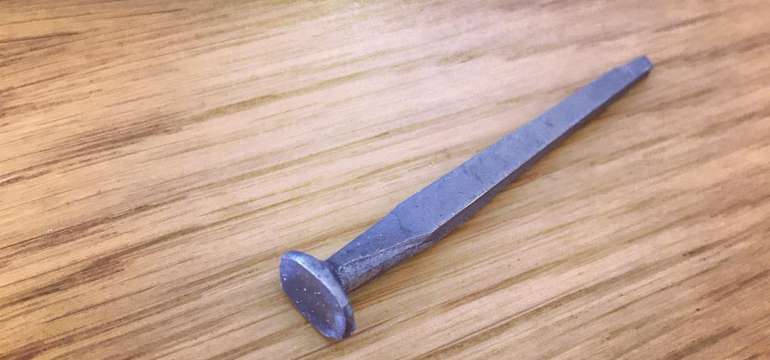When you think about the walls of your home, you might envision the finished product: a smooth drywall with a fresh coat of paint. Few people consider the actual labor that goes into framing the walls to make this dream into a reality. Framing walls requires a great deal of planning and technical know-how in order to get the job done properly. Choosing the right wood and the right nails is incredibly important.
What size nails are used for framing? The answer to this question can guide you through the process of selecting the proper nail size that will hold your framing together for the long haul.
What size nails for framing?
When it comes to finding the perfect nail size for framing, you need something that is going to be just the right length and thickness. A nail that is too long could be difficult to place and result in a piece of lumber that splits. On the other hand, nails that are too short and thin simply won’t be able to hold your structure together. You must find the proper balance when selecting the perfect nail for framing with 2x4s.
What size framing nails are used for 2×4 framing? Most contractors agree that you want to use 16d nails, also referred to as 16-penny nails. These are the perfect length at 3 ½ inches.

16-penny nails
There are two distinct varieties of these 16-penny nails: common nails and sinker nails. Common nails have a smooth head and a wider diameter of 0.162 inches. Alternatively, sinkers have a textured head and a thinner diameter of 0.148 inches.
When it comes to figuring out what size nails to use for framing a 2×4, you will want to use the sinker nails. The textured head prevents the hammer from slipping when using these types of nails. They also typically have a vinyl or epoxy coating that allows you to drive them into the framing far more easily than the common variety.
What size nails for attachments?
While the 16d nails are perfect for joining together the 2x4s that make up your walls, you will need a different type of nail for the attachments. These attachments can include furring strips, subfloors, and sheathing. The length of a 16d nail is simply too long and is unnecessary when it comes to this aspect of framing.
Instead, you should plan to use the smaller 8d nails. They are one inch shorter, bringing their total length to just 2 ½ inches. Similar to 16d nails, there is also a common nail and a sinker variety. The sinkers are also vinyl-coated and slightly thinner than the common nail counterparts, making them ideal for this type of application.
Another instance where you may not want to use 16d nails is when a door trimmer or header will need to be doubled. When this is the case, you want a smaller nail that will not penetrate through both boards. It is better to use a slightly smaller nail for this application. Contractors will often use a 10d nail instead.
What size nails for deck framing?
Framing out a deck is a slightly different process than framing your interior walls. You will need to consider what size nails to use for this new and different application. In fact, it is typically recommended that you use deck screws over nails because they have a special coating that renders them more resistant to corrosion over time.
These screws are known to be sharp and tapered, allowing you to drive them in quickly with a cordless drill. A screw also gives you a greater degree of security when it comes to holding power when compared to the nails you would use with an interior wall. Much like framing nails, they do come in different sizes, as well. You should consider using a #10 decking screw to hold together the framing. These will range from 2 1/2- to 3 ½-inches in length.

A square head nail
Be sure to examine the type of head on the decking screws before you make your purchase. They will either have a Phillips head, a square head, or a combination head. Experts recommend that you purchase screws with a square head in order to more securely fasten the pieces of your deck together.
You must be careful not to strip the head of the screw during the fastening process. Stripping the screw will make it difficult to remove in the future if you ever needed to remove a piece of the framing for a repair.
Finding the right nails
Finding the right size nails for framing your interior walls or your deck can be overwhelming. Your local home improvement store likely has an entire aisle devoted to the different fasteners you might need. However, finding out what size nails are used for framing might be simpler than you thought.
If you are framing a standard wall or deck, then you can choose to use one of these common sizes. Understanding what makes a nail or screw effective is the first step toward creating framing that will last for the future.
- How to Cut Lexan - September 25, 2020
- Mineral Spirits vs. Mineral Oil - September 25, 2020
- Shellac vs. Polyurethane - September 24, 2020
